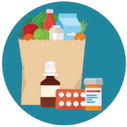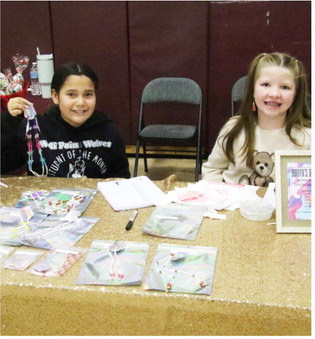CDC Issues Guidelines For Running Essential Errands: Grocery Shopping, Take-Out, Banking, Getting Gas And Doctor Visits


As communities across the United States take steps to slow the spread of COVID-19 by limiting close contact, people are facing new challenges and questions about how to meet basic household needs, such as buying groceries and medicine and completing banking activities.
The following information provides advice about how to meet these household needs in a safe and healthy manner.
Shopping For Food And Other Household Essentials
Stay home if sick.
•Avoid shopping if you are sick or have symptoms of COVID-19, which include a fever, cough, or shortness of breath.
Order online or use curbside pickup.
•Order food and other items online for home delivery or curbside pickup (if possible).
•Only visit the grocery store, or other stores selling household essentials, in person when you absolutely need to. This will limit your potential exposure to others and the virus that causes COVID-19.
Protect yourself while shopping.
•Stay at least 6 feet away from others while shopping and in lines.
•Cover your mouth and nose with a cloth face covering when you have to go out in public.
•When you do have to visit in person, go during hours when fewer people will be there (for example, early morning or late night).
•If you are at higher risk for severe illness, find out if the store has special hours for people at higher risk. If they do, try to shop during those hours. People at higher risk for severe illness include adults 65 or older and people of any age who have serious underlying medical conditions.
•Disinfect the shopping cart, use disinfecting wipes if available.
•Do not touch your eyes, nose or mouth.
•If possible, use touchless payment (pay without touching money, a card or a keypad). If you must handle money, a card or use a keypad, use hand sanitizer right after paying.
Use hand sanitizer when you leave the store. Wash your hands when you get home.
•After leaving the store, use hand sanitizer. When you get home, wash your hands with soap and water for at least 20 seconds.
•At home, follow food safety guidelines: clean, separate, cook, chill. There is no evidence that food or food packaging has been linked to getting sick from COVID-19.
AcceptingDeliveries And Takeout Orders
Limit in-person contact if possible.
•Pay online or on the phone when you order if possible.
•Accept deliveries without in-person contact whenever possible. Ask for deliveries to be left in a safe spot outside your house (such as your front porch or lobby), with no person-to-person interaction. Otherwise, stay at least six feet away from the delivery person.
Wash your hands or use hand sanitizer after accepting deliveries or collecting mail.
•After receiving your delivery or bringing home your takeout food, wash your hands with soap and water for 20 seconds. If soap and water are not available, use a hand sanitizer with at least 60 percent alcohol.
•After collecting mail from a post office or home mailbox, wash your hands with soap and water for at least 20 seconds or use a hand sanitizer with at least 60 percent alcohol.
Banking
Bank online whenever possible.
•If you must visit the bank, use the drive-through ATM if one is available. Clean the ATM keyboard with a disinfecting wipe before you use it.
•When you are done, use a hand sanitizer with at least 60 percent alcohol. Wash your hands with soap and water for at least 20 seconds when you get home.
Getting Gasoline
Use gloves or disinfecting wipes on handles or buttons before you touch them.
•Use gloves or disinfecting wipes on handles and buttons before you touch them if available.
•After fueling, use a hand sanitizer with at least 60 percent alcohol. Wash your hands for at least 20 seconds when you get home or somewhere with soap and water.
Going To The Doctor Or Getting Medicine
Talk to your doctor online, by phone or e-mail.
•Use telemedicine, if available, or communicate with your doctor or nurse by phone or e-mail.
•Talk to your doctor about rescheduling procedures that are not urgently needed.
If you must visit in-person, protect yourself and others.
•If you think you have COVID-19, let the office know and follow guidance.
•Cover your mouth and nose with a cloth face covering when you have to go out in public.
•Do not touch your eyes, nose, or mouth.
•Use disinfecting wipes on frequently touched surfaces such as handles, knobs, touchpads if available.
•Stay at least six feet away from others while inside and in lines.
•When paying, use touchless payment methods if possible. If you cannot use touchless payment, sanitize your hands after paying with card, cash or check. Wash your hands with soap and water for at least 20 seconds when you get home.
Limit in-person visits to the pharmacy.
•Plan to order and pick up all your prescriptions at the same time.
•If possible, call prescription orders in ahead of time. Use drive-through windows, curbside services (wait in your car until the prescription is ready), mail-order or other delivery services. Do the same for pet medicine.
•Check with your doctor and pharmacist to see if you can get a larger supply of your medicines so you do not have to visit the pharmacy as often.





